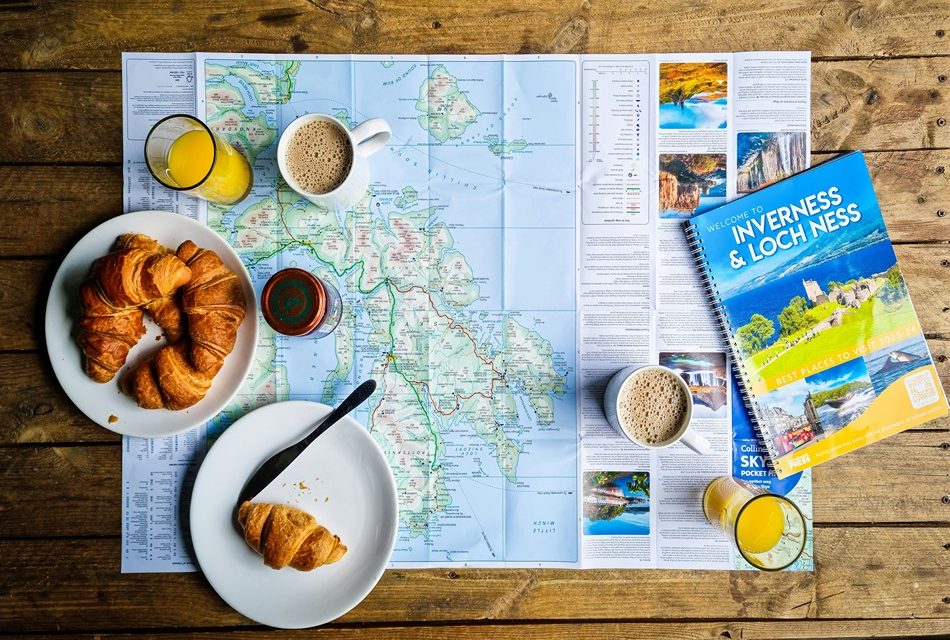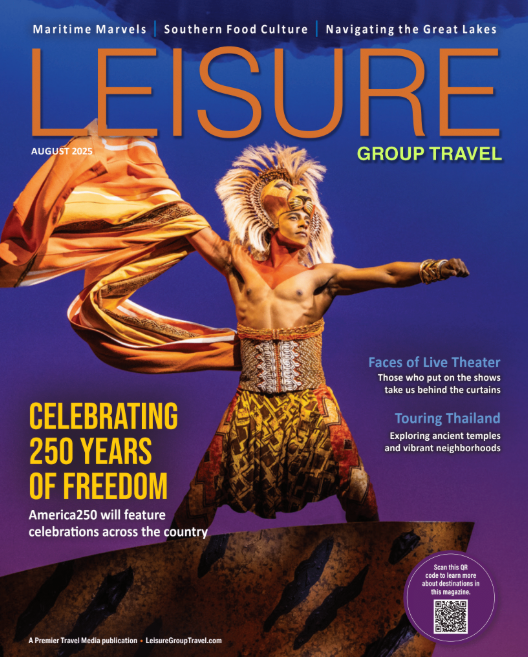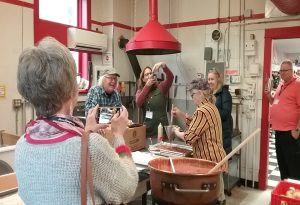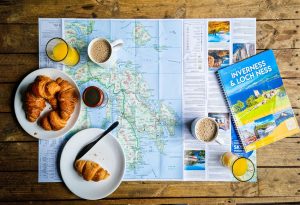How tour planners can harness smart tools
By Jim Rice
Artificial intelligence is showing up in our daily lives, recommending what to watch on our favorite steaming platform, drafting emails and even suggesting dinner recipes. Travelers are using it too and it’s something tour planners should be acutely aware of.
If your clients are already experimenting with AI, shouldn’t you know how to put it to work yourself?
While AI won’t replace our operators, it has the potential to be your new digital assistant, potentially saving you time, polishing your marketing presence, and helping deliver more personalized travel experiences.We can all use a little extra help, right?
What does the rise of AI mean for trip planning and how can tour operators embrace these tools without getting lost down a rabbit hole? Let’s break it down.
For more great travel stories, Read the Full Leisure Group Travel Magazine and Subscribe to the Newsletter for FREE
The AI Revolution in Travel
At its core, artificial intelligence is technology that mimics human thinking: learning from data, recognizing patterns and making predictions. Believe it or not, most of us use it everyday with tools like Google Maps’ real-time traffic updates, predictive text on your phone, or Instagram’s recommended reels all being powered by AI.
In the travel industry, the momentum is swift and undeniable. Major booking engines are layering AI into their platforms to deliver smarter search results. Airlines are implementing AI-powered chat for customer service. Even hotels are using AI to analyze guest preferences and improve loyalty programs.
For group planners, this matters because your work sits at the intersection of logistics, communication, and customization—three areas where AI excels. The sheer complexity of moving dozens of people on one itinerary makes group travel a perfect match for AI-driven assistance.
AI in Action for Tour Planners
Here are four areas where AI is making an impact on group travel planning:
1. Trip & Itinerary Planning
Imagine drafting a themed itinerary in minutes. Create a prompt asking for a “three-day trip for a senior group interested in Civil War history near Washington, D.C.” into ChatGPT or Claude, and you’ll instantly get a list of suggested sites, dining options and tour routing.
Of course, it won’t be perfect, that’s where the importance of properly written prompts comes in. The beauty of AI tools like ChatGPT is that if you don’t get the results you’re looking for, simply provide more details on what you need or redirect your question. It won’t get offended like your 21-year-old intern does!
AI doesn’t know about things like the best group-friendly restaurants, private tours or where to park the motorcoach, but as a brainstorming tool it’s a huge timesaver.
Take that raw outline, refine it with your empirical knowledge, and turn it into a polished itinerary. Think of it as having a research assistant that never takes PTO.
2. Customer Service & Chatbots
One of the biggest time suckers in group travel is fielding repetitive questions: “When is the deposit due?” “What’s the luggage limit?” “Do I need a passport?” “When is the midnight buffet?” Offload these FAQ’s to AI-powered chatbots and you’ll sleep better at night knowing you’ll have a clean inbox with a bot answering late-night questions.
Platforms like Many Chat or Tidio allow you to set up simple automated responses on your website or Facebook page. A chatbot doesn’t have to be expensive or complex, many of these programs start with a free version that answers your most common questions.
3. Marketing Support
Let’s face it, we didn’t get into the tour business with master marketing chops. Crafting compelling sales materials is frustrating, expensive and time-consuming. AI tools like Jasper or Copy.ai can draft entire social media campaigns, client correspondence, offer up email subject lines and even brochure copy in seconds.
Canva, a popular (free) design tool has implemented AI design features that help you create phenomenal graphics for promotions with just a few clicks. Popular email marketing program are also“all-in” on AI. Programs like Mailchimp integrate AI for audience targeting and analytics. This helps you target messages so you’re not sending around-the-world cruise offerings to day-trippers.
For busy tour planners, these tools make marketing less of a chore and will help you up your game instantly. Instead of repeating the same ole’ or staring at a blank screen, incorporate AI tools then refine messaging with your brand voice and expertise.
4. Personalization at Scale
Your travelers aren’t cookie-cutter. Some might be a lover of food tours, others want faith-based experiences or are focused on adventure thrills. AI shines in pattern recognition, which means it can help tailor trips to specific interests.
For example, if you keep records of past trips, AI-powered customer relationship management (CRM) tools can suggest similar destinations or experiences based on what your clients previously booked. This can be a game-changer if you’re trying to fill those last few seats on a trip, or deliver experiences that feel custom-built without starting from scratch.
The Human Factor: Why Planners Still Matter
With all this talk of AI, some planners may worry: Will machines replace me? The short answer is no.
AI can generate a list of attractions, but it doesn’t know which museums are a better fit for YOUR travelers, or which restaurant knows how to serve groups efficiently. It can’t negotiate rates, navigate group dynamics, or provide the reassurance that only comes from a seasoned professional.
What AI can do is remove the grunt work. Think about the endless Googling, the back-and-forth emails, the blank-page marketing dread that we all face. Use AI to handle repetitive tasks or create new concepts so you can focus on building relationships and delivering experiences that wow your travelers. Think of it as your co-pilot, not competitor.
Challenges & Watch-Outs
AI isn’t without its pitfalls. A few things to keep in mind:
- Accuracy: AI can “hallucinate” and provide false information. Always double-check facts, especially when it comes to hours of operation, pricing, or visa requirements.
- Privacy: If you’re inputting client data into AI tools, make sure you’re protecting personal information. Stick with platforms that have clear security policies and opt out of sharing your data.
- Overreliance: AI output can be generic. Don’t let it replace your creativity or professional judgment.
- Cost Creep: Many tools are free at first but charge for premium features. Test carefully before committing to monthly subscription plans.
Getting Started with AI
The good news is that you don’t need a tech background or huge budget to start experimenting. Here are a few simple entry points:
- ChatGPT or Claude: Use for itinerary brainstorming, customer email drafts, or marketing copy ideas.
- Canva AI: Generate quick, polished graphics for flyers, social posts, or newsletters.
- ManyChat or Tidio: Set up a basic chatbot to answer FAQs on your website or Facebook page.
- Google Translate or Pocketalk: AI-powered translation apps that make international tours easier.
- TripIt or Roadtrippers: AI-assisted apps that help keep group itineraries organized.
Start small. Try one or two tools on a single project and see how it goes. Share results with your team, gather feedback, and build from there.
Ready to Get Started?
Artificial intelligence is being woven into the fabric of how we plan, book, and experience travel. For tour planners, it offers an opportunity to save time, streamline communication and deliver more personalized service to your groups.
The key is to use it wisely. Let AI handle the heavy lifting on research, FAQs, and first drafts, but keep your human touch at the center. After all, no algorithm can replace the expertise, intuition, and passion that group travel planners bring to the table.
So go ahead—test it, tweak it, and make it your own. The future of trip planning isn’t human or machine. It’s human with machine. And that’s a future worth planning for.
For more great travel stories, Read the Full Leisure Group Travel Magazine and Subscribe to the Newsletter for FREE






